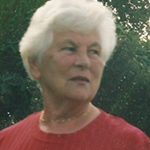
Book Review: Alive & In Use: Poems in the Japanese Form of Haibun
By Charlotte Mandel
Published by Kelsay Books
Utah, USA
2019, Paperback, 58 pp.
ISBN: 978-1-949229-86-8
Ordering Information
Reviewed by Patricia Prime
Charlotte Mandel’s haibun in Alive & In Use show a genuine passion for her subjects. They focus on nature and human nature: Mandel presents us with personal details and informed observations of everything around her, as we see in the first short haibun, “September’s First Monday”:
Careful not to stumble on thick green sod,
I stop and slowly bend to pluck a dandelion
still yellow among dozens with globes of
blow-away seeds. Holding the rubbery thread
of stem between thumb and forefinger, I
inhale scents of grass and earth cleansed by
last night's rain. Sun-warmed downy petals
stroke my cheek. The flower's crown wobbles.
fontanel pulse
in the cup of my hand
once
Throughout the book, I enjoyed the movement between poetic commentary, personal statements, and the fragments of lyricism contained in the haiku. One of the lengthier haibun, “Birdwatch at the Artists’ Colony (Yaddo),” is a highlight of the collection. Mandel’s experience of looking for the great blue heron among the lakes, ponds, and shallow water of the colony is told in a light-hearted style. Her description of the heron is precise and colourful:
At the fourth pond, I glance right—and there
stands the great bird, wading in shallow water
thickly scummed with yellow-green algae. A
bird almost my own height, he seems a
throwback from the dinosaur era. Feathers
grey as sky about to storm, beak yellowish,
long, thick, with a dagger point.
In the simple haiku that ends the poem,
eye to eye
motionless
with the heron
we are at one with the poet as she stands beside the pond, looking at the great blue heron for the first time. Mandel presents us with detail that makes her connection to the subject matter more personal.
“Guardians” is another longer haibun, describing a walk “across grass to the cedar bench overlooking the pond.” It, too, shows Mandel’s skill with linking and shifting between prose and haiku. The sight of a pair of Canada geese, who might be husband and wife, reminds the poet of the image in one of her framed photographs:
five years gone . . .
he still smiles
in the framed photo
There are several shorter haibun among the longer poems. “Workdays at Millay Colony,” for example, describes the poet’s surroundings as she works in her barn studio:
In the field of browning grass and reddening
weeds, stands a white pine tree the height of
my breastbone. I stroke a branch. The summer
grown needles feel soft as the fur of the orange
cat who visits my barn studio.
licks of rough tongue
Chopin on radio
In “New York Moment,” there’s enough psychology to spark a book-length poem. It opens with the poet reading a copy of Rilke’s Duino Elegies in the Port Authority Bus Terminal. I enjoyed the jolt when the poet opens her paperback and almost immediately has a card thrust upon her and encounters
the dancing look of a lithe young man, mirth
in the recesses of his eyes scarcely shadowed
by a large-brimmed hat, his jacket glove-fitted
to the V of his waist.
The card itself bears, amazingly, a phrase from Rilke’s prose. It also contains the image of an eagle-winged dove flying over a U.S. flag and the solicitation, “I am selling this . . . pay any price you like.” It all leads to a poignant moment where, in Rilke’s words, “one’s left with a mere imitation of the kind of speech that may be possible There, where silence reins.”
The book also includes a lengthy tanka exchange, “Who Loves? (Somonka),” which portrays lovers exchanging letters. She portrays the characters tenderly. The final lines are particularly poignant:
Come back with me, then—
Let machines talk to machines.
When my body speaks
your phantom blood courses through—
heat and pulse and loss of self
yes, and gain! Kisses
articulate, words arouse
something within me
wild for the You questioning/
answering within my veins.
The book ends with the short haibun “What Falls.” It describes a fallen maple leaf, which reminds the poet of the birth of her first grandchild and the passing of generations. The poem ends:
The fallen leaf grows drier, more brittle.
On my palm, it begins to curl.
my father’s hand
holding mine
last visit
Again, a skilled interweaving of nature, personal experience, and poetry. Charlotte Mandel’s is a welcome voice, wide-ranging and original, and her collection explores personal stories that leave space for readers to find their own histories.
About the Reviewer

Patricia Prime is co-editor of the NZ haiku journal Kokako. She is the articles editor for Contemporary Haibun Online and also is a reviewer for Atlas Poetica, Takahe, and other journals.
